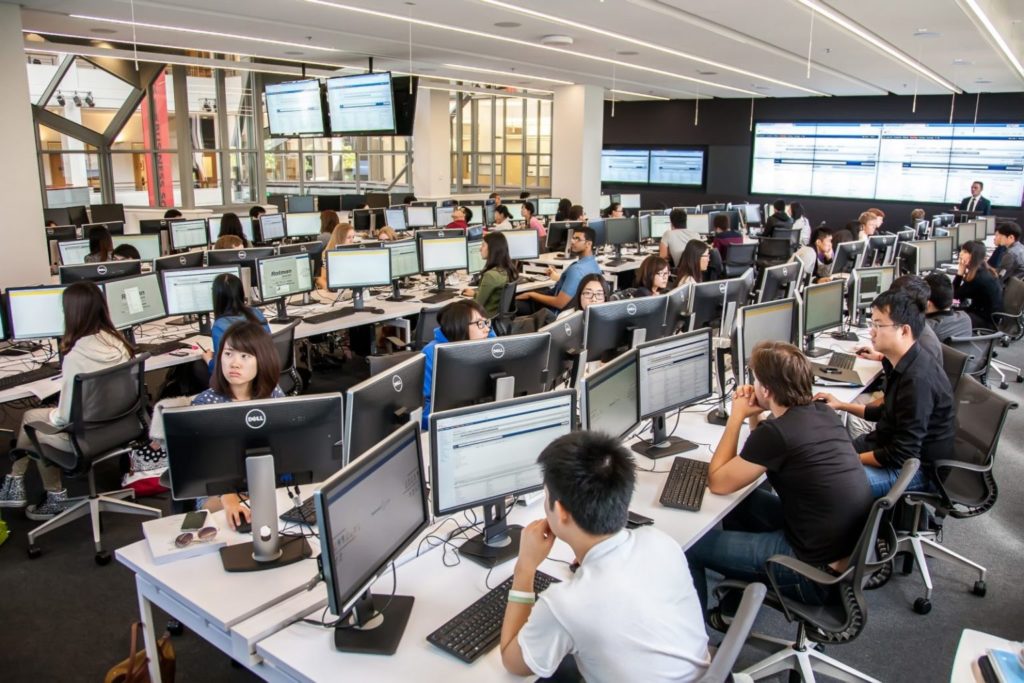Diversity & Inclusion Courses
What would we do without diversity and inclusion in our modern world? It may be hard to imagine nowadays how humans lived without this advancement in the understanding of society in the past; it must have been really dark days. However, thanks to modern practices, it has become tremendously easy to get an education in the sphere to learn about necessary concepts and, in the future, create safe spaces that will allow all employees, no matter their gender, race, or shape of the skull, to work effectively at a more comfortable workplace. Continue reading the article to find out more about the skills and knowledge you will have after completion of the course on the topic.
What are diversity, equity, and inclusion?
Despite the fact that modern employees want to work at better workplaces and want to be treated by their employers well, only a small fraction cares about what the above-mentioned terms mean and how these concepts differ.
Diversity
The idea of diversity revolves around the struggle to present a huge variation of differences in a certain setting with the given tools and methods. Creating a diverse workplace means striving to present workers with differences in race, gender, or social orientation.
Equity
This term envelops the fact that programs and practices are ensured impartially. Not only do they have to promote equal access and participation of every team member, but they also should engage as many workers of the same organization in the projects. Overall, this should provide faster progress and better outcomes.
Inclusion
Inclusion practices ensure that all participants feel that they belong to the workplace they are in, they feel needed in the community and can complete their tasks with a higher level of effectiveness. All in all, this practice has to help create inclusive workplaces where every member can succeed.
Skills to build inclusive workplaces
To promote the ideals of equity, diversity, and inclusion, it is advisable to have a certain set of skills and competencies that can make success more likely.
- One of the most important skills that can help in achieving equity, diversity, and inclusion is empathy. However, many workers are also concerned with mental flexibility and the ability of employers to discuss difficult topics and build relationships with the team.
- An influential leadership also contributes to building inclusion, diversity, and, more importantly, bringing awareness to the problem of inequity. If managers explore ways to solve the challenging task of diversifying the team and providing equal opportunities to the members. As a result, employees will be interested in learning new skills and unveiling new perspectives.
- Leaders who seek inclusion, equity, and diversity in their organizations have to know well how to spot the most suitable talents for the business. This allows them to benefit fast from hiring unbiased workers with ideas of diversity and inclusion. However, it may be difficult as sometimes these abilities can be acquired from lived experience.
Steps for Diversity, Equity, and Inclusion Training
After having successfully completed diversity and inclusion training and getting the certificate, you will be able to organize care courses in your organization.
The steps to succeed in diversity and inclusion training:
- Conversation encouragement is one of the best strategies to achieve equity, diversity, and inclusion goals. While talking, employees, or your students, will understand their biases, and you will provide them with tools to affect and, in the end, combat them.
- However, sometimes we may not even be aware of certain biases that we have. They are unconscious. At first, you will have to raise awareness of these biases, examine their roots closely, and in the end, teach learners how to banish them from the person's mind and community. Oh, wait a sec, we have almost forgotten about one thing. You should not blame the workers because of the biases they have. The training is successful only when it takes place in a positive atmosphere.
- Last but not least is giving your students tools and strategies that will help them engage more people in the long-lasting process of creating a diverse and inclusive workplace. This envelops mentorship programs, training on the correct and unbiased running of meetings, and instructions on how to prevent aggression.
Why study equity, diversity, and inclusion online?
Scientists that were studying diversity and inclusion in organizations have come to the conclusion that such practices carry lots of good themselves, and hence their introduction is not the moral question but the problem of improving productivity. There are many other benefits that inclusive and diverse practices bring to the communities, so let's examine them a bit more closely.
The benefits of equity, diversity, and inclusion are the following:
Biases hinder the access of professionals to positions and significantly shrink their prospects of being hired. To deprive the privilege and create equitable organizations free from any prejudice, studying the program connected with DEI is essential
By bringing topical strategies to the workplace, you will be able to create a path for new ways of thinking. The team will understand that their voices matter, and they are sure to explore ways to improve the workplace as they speak for the communities in a way nobody else can.
- Customer-oriented approach
By destroying privilege at the workplace and building an equitable environment, you show not only your workers but the whole society that you care about the employees. This allows the possible clients to pick your company among other organizations that seem biased to them.
Diversity inclusion prospects
Studying the program of DEI and getting the certificate for course completion is a highly important step in improving your workplace. This education is a great opportunity to explore the need of the workers to be heard and implement strategies that will help them to discuss matters freely. Even though this training may look unnecessary, many companies seek to hire workers with experience in the field.
Frequently Asked Questions - FAQ
How will I study diversity and inclusion?
Normally, the educational program is centered on several classes with experienced educators that teach a certain number of participants at first via lectures and then using seminars where every student can examine a certain situation that involves diversity and inclusion problems at a workplace and then offer a way to find a way out of the situation. Upon completion, the student is given a certificate.
How to get education on the topical matter?
Finding out about inclusive strategies involves the completion of a course or even some core courses where this knowledge and some training will be presented to you in the best form. After such training, you will be able to promote the ideas of equity and diversity at your workplace.
How long does it take to study DEI online?
Overall, it's not that long to learn how to respect others. The learners that want to study the program of the course they select will spend between a week and ten weeks to grasp the necessary concepts. However, the progress and outcomes will definitely satisfy you as after the end of the course, you will receive a certificate and the necessary training that allows you to educate workers and promote DEI ideas.







